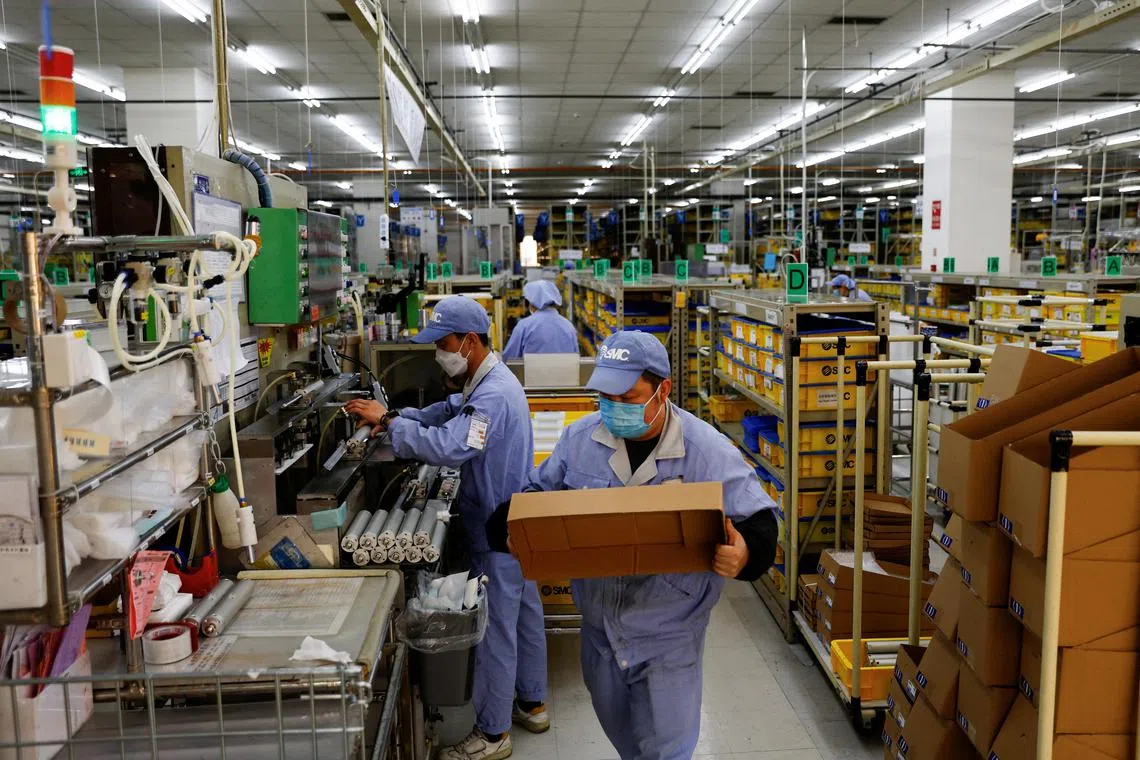Asia factories gather some speed on China reopening boost
Sign up now: Get ST's newsletters delivered to your inbox

The latest round of factory data adds to uncertainty as the global economy braces for a downturn.
PHOTO: REUTERS
Follow topic:
Jakarta - Asia’s manufacturing activity showed signs of revival as China’s reopening
The latest round of factory data adds to uncertainty as the global economy braces itself for a downturn, amid persistent inflation and high borrowing costs sapping already-fragile demand.
The divergence continued to widen in the region’s factories in February, with South-east Asia’s more domestically driven economies forging on ahead with their expansion and North Asia’s export-oriented hubs lagging, data from S&P Global manufacturing purchasing managers’ indexes (PMIs) showed on Wednesday.
Thailand posted a region’s best PMI reading of 54.8 in February as it ramped up manufacturing production and output.
Vietnam’s gauge jumped sharply to 51.2 in February from 47.4 the previous month, crossing the 50-mark that separates expansion from contraction.
The Philippines, Indonesia and Myanmar likewise posted positive PMI prints.
“Improving demand conditions both domestically and internationally breathed new life into the Vietnamese manufacturing sector during February, snapping a three-month soft patch around the turn of the year,” said S&P Global Market Intelligence economics director Andrew Harker.
The resurgence in activity in China
The mainland’s PMI reading stood at 52.6 in February, beating estimates.
The non-manufacturing gauge – which measures activity in both the service and construction sectors – increased to 56.3 from 54.4, better than a projected improvement to 54.9.
Meanwhile, the contraction in North Asia’s factories persisted in February.
The downturn sharpened in Japan, where PMI fell to 47.7, its lowest in more than two years.
South Korea will report its data on Thursday, but weak preliminary exports data suggests the nation’s woes continue.
Taiwan’s PMI jumped to 49 from 44.3, although it still remained in the red. The island, a bellwether for global trade, reported softer drops in output and new orders, as well as improved supply chain pressures.
“The upwards movement in the indexes reflected relative improvements in demand at some companies, partly due to the easing of Covid-19 restrictions in mainland China, and adds to hopes that the worst of the current downturn is now behind us,” said S&P Global Market Intelligence economics associate director Annabel Fiddes. BLOOMBERG

